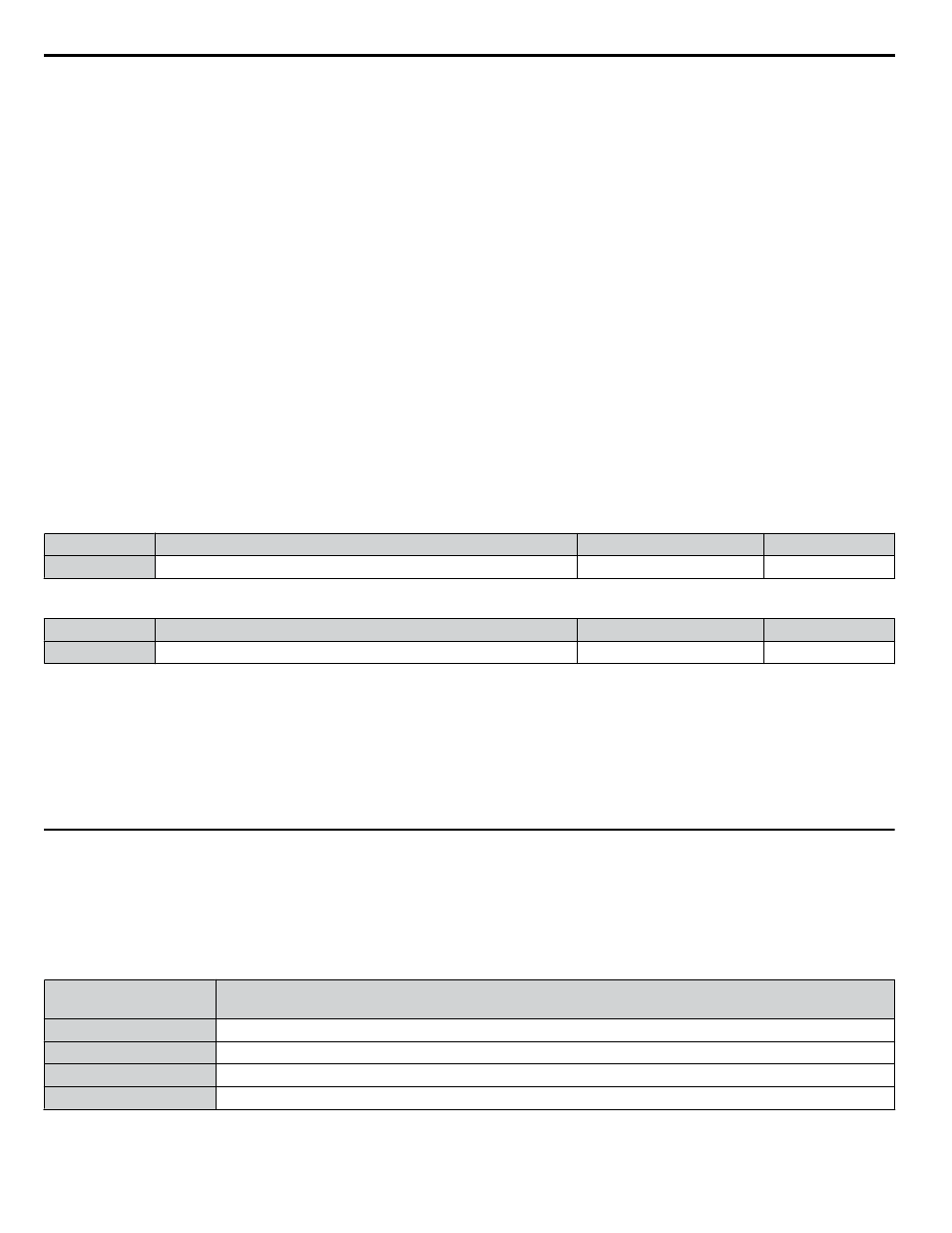L6: torque detection, For details on torque detection – Yaskawa AC Drive P1000 Bypass Technical Manual User Manual
Page 134

• The RESET key is pushed after the last reset attempt.
The setting of parameter L5-02 determines whether the fault output (MA-MB) will be closed during an auto restart attempt.
The setting of L5-02 can be important when using the drive with other equipment.
The following faults will allow the Auto Restart function to initiate:
• oC (Overcurrent)
• LF (Output Phase Loss)
• PF (Input Phase Loss)
• oL1 (Motor Overload)
• oL3 (Overtorque Detection 1)
• oL2 (Drive Overload)
• ov (Overvoltage)
• GF (Ground Fault)
• Uv1 (Undervoltage)
• oH1 (Heatsink Overheat)
In order for auto restart after a Uv1 fault, Momentary Power Loss Ride-thru must be enabled (L2-01= 1: “Power Loss Ride-
thru Time”). Setting H2-01, H2-02 or H2-03 to 1E configures a digital output as “Restart Enabled” to signal if an impending
auto restart is possible
<1>
.
<1> Details on this function can be found in the standard P1000 Technical Manual (SIEPYAIP1U01) at www.yaskawa.com.
n
L5-04: Fault Reset Interval Time
Determines the amount of time to wait between restart attempts when parameter L5-05 is set to 1.
No.
Name
Setting Range
Default
L5-04
Fault Reset Interval Time
0.5 to 600.0 s
10.0 s
n
L5-05: Fault Reset Operation Selection
No.
Name
Setting Range
Default
L5-05
Fault Reset Operation Selection
0, 1
0
Setting 0: Count Successful Restarts
The drive will continuously attempt to restart. If it restarts successfully, the restart counter is increased. This operation is
repeated each time a fault occurs until the counter reaches the value set to L5-01.
Setting 1: Count Restart Attempts
The drive will attempt to restart using the time interval set to parameter L5-04. A record is kept of the number of attempts to
restart to the drive, regardless of whether those attempts were successful. When the number of attempted restarts exceeds the
value set to L5-01, the drive stops attempting to restart.
u
L6: Torque Detection
The drive provides two independent torque detection functions that trigger an alarm or fault signal when the load is too heavy
(oL), or suddenly drops (UL). These functions are set up using the L6-oo parameters. Program the digital outputs as shown
below to indicate the underload or overload condition to an external device:
Note:
When overtorque occurs in the application, the drive may stop due to overcurrent (oC) or overload (oL1). To prevent the drive from stopping,
use torque detection to indicate an overload situation to the controller before oC or oL1 occur. Use undertorque detection to discover
application problems like a torn belt, a pump shutting off, or other similar trouble.
H2-01, H2-02, H2-03
Setting
<1>
Description
B
Torque detection 1, N.O. (output closes when overload or underload is detected)
17
Torque detection 1, N.C. (output opens when overload or underload is detected)
18
Torque detection 2, N.O. (output closes when overload or underload is detected)
19
Torque detection 2, N.C. (output opens when overload or underload is detected)
<1> Details on this function can be found in the standard P1000 Technical Manual (SIEPYAIP1U01) at www.yaskawa.com.
illustrate the functions of overtorque and undertorque detection.
5.8 L: Protection Functions
134
YASKAWA SIEP YAIP1B 01A YASKAWA AC Drive – P1000 Bypass Technical Manual
